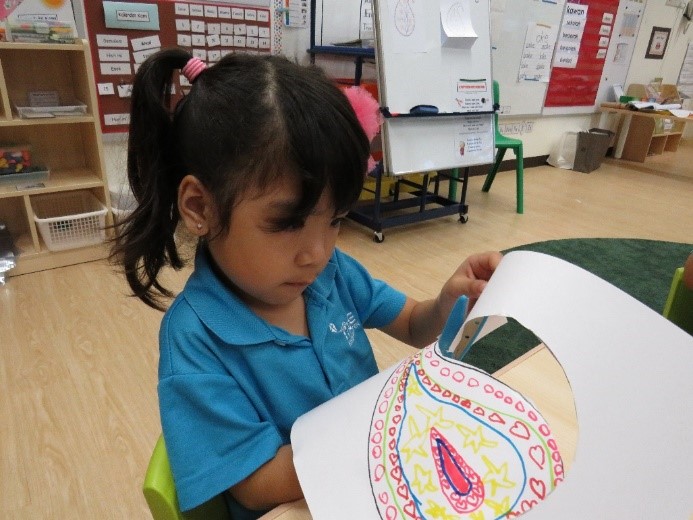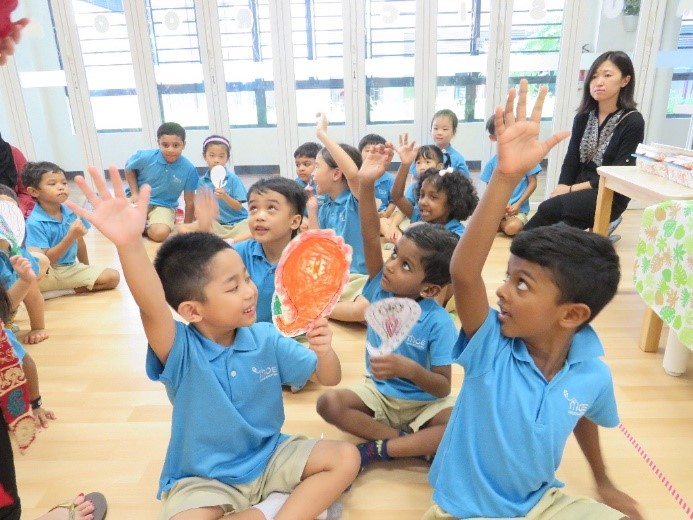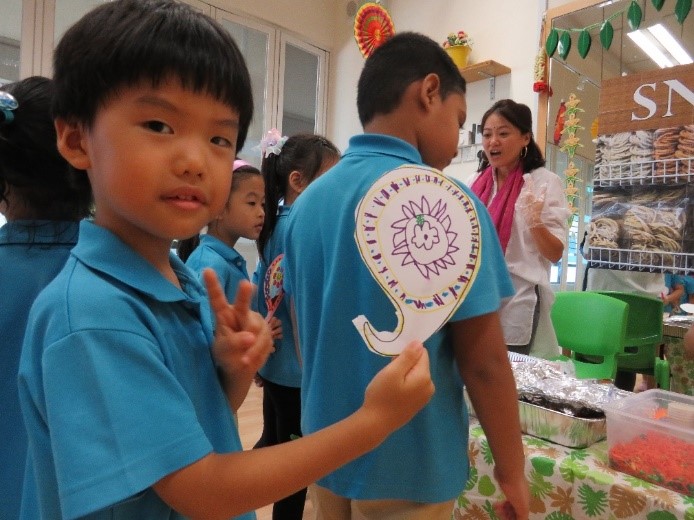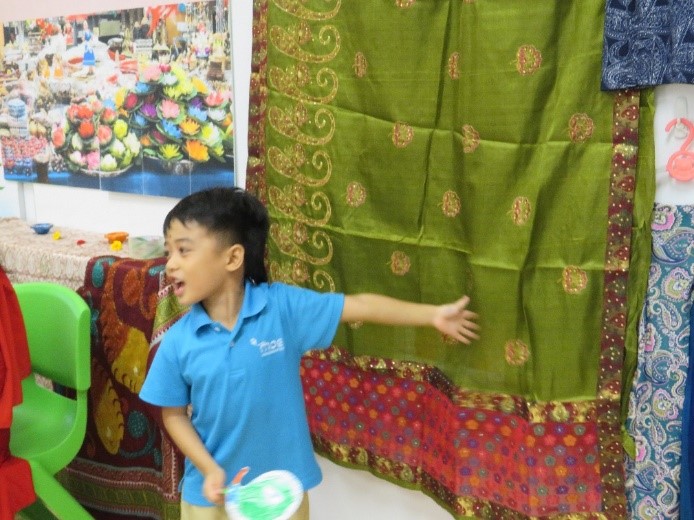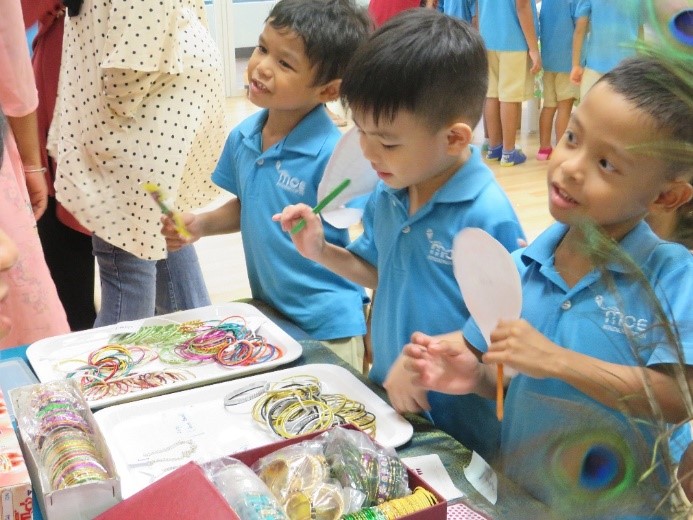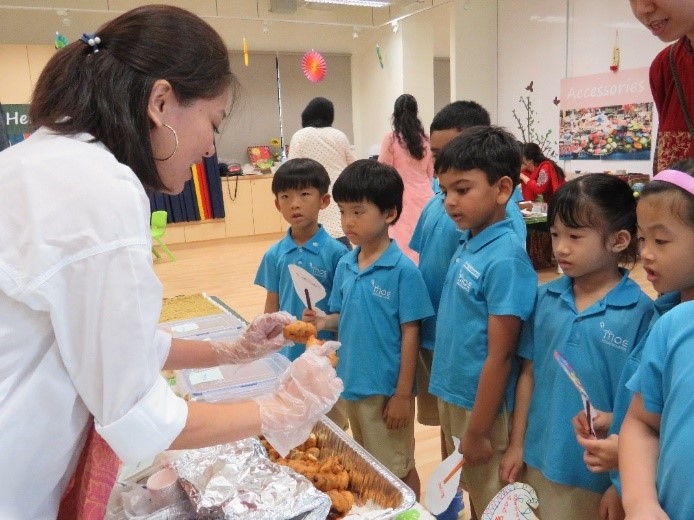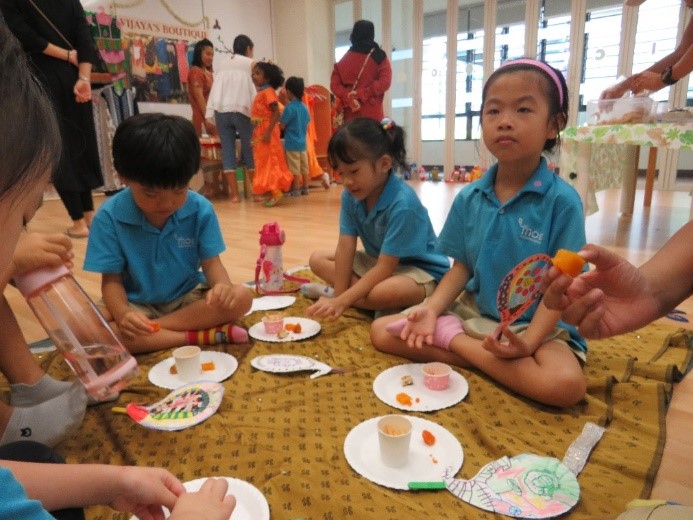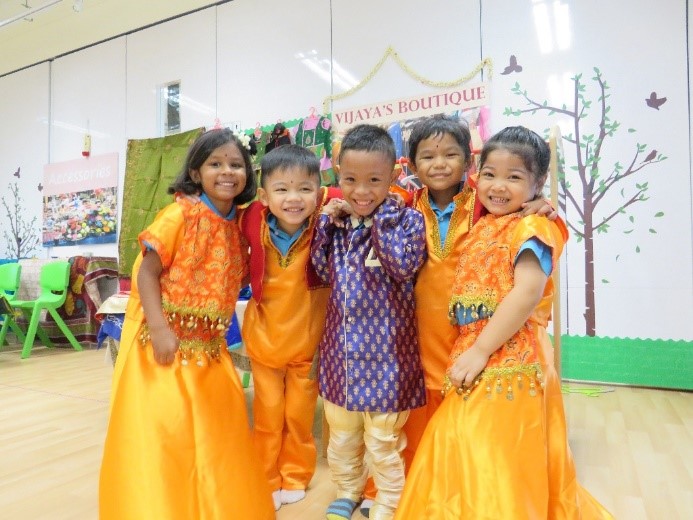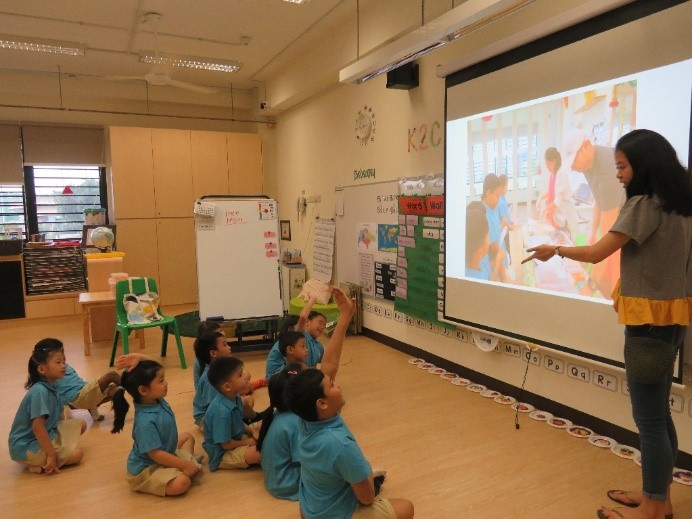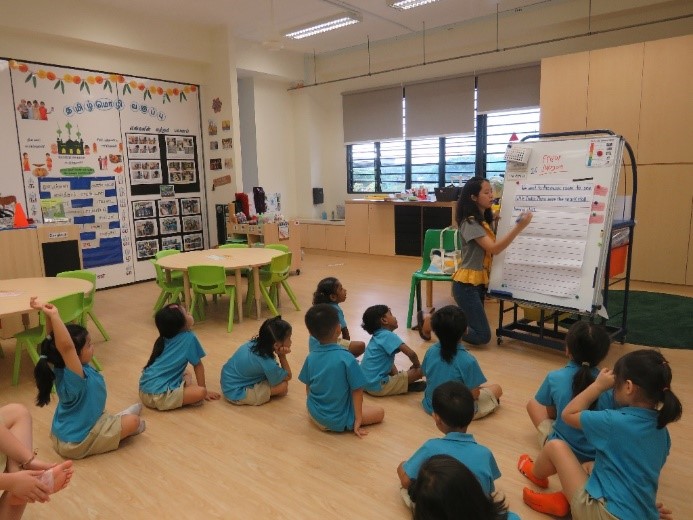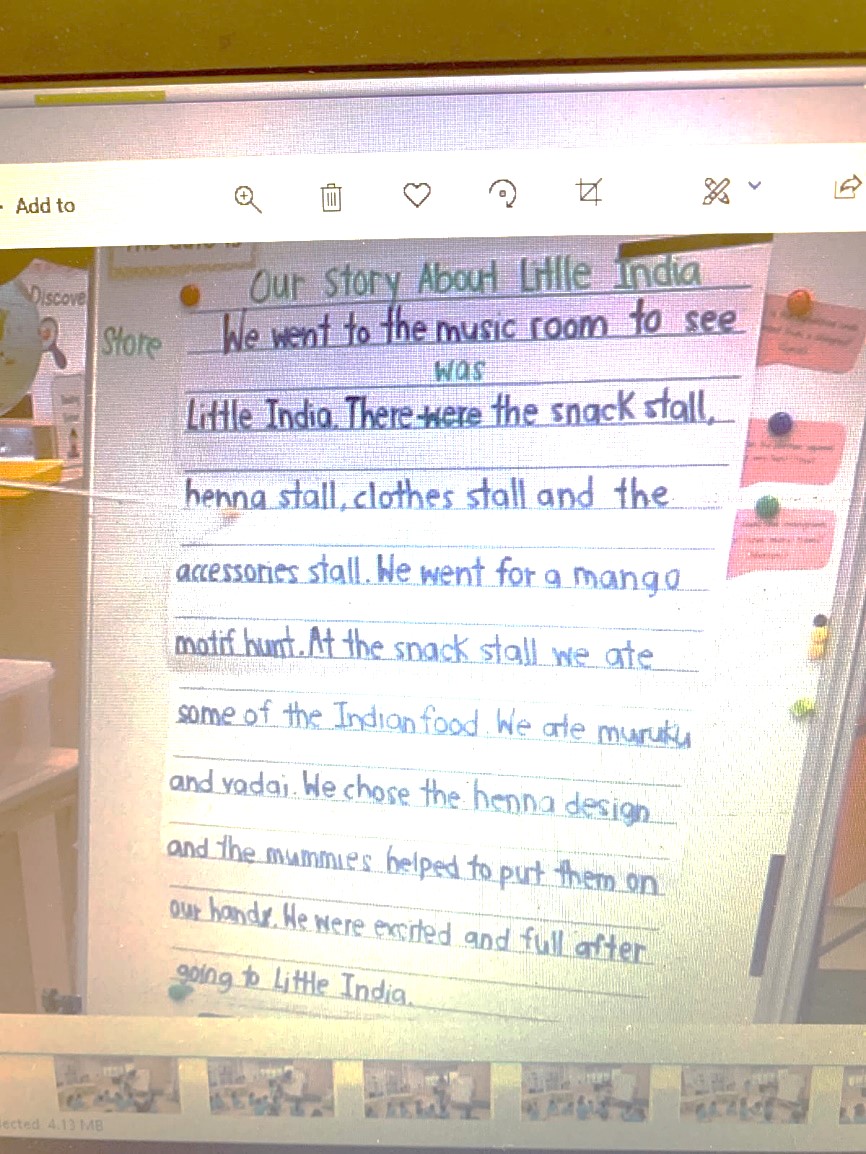Home >
Teaching & Learning Resources >
Activity Ideas >
Culture and Festivals >
Experiencing Little India
"Experiencing Little India" • MOE Kindergarten @ Waterway
1) Background of the activity
For this activity, the K2 children were initially planning to visit Little India Arcade to learn about the mango motif in the Indian culture. However, the teachers noticed that the Little India Arcade did not open early enough for the children from the morning session to visit.
In order to allow the children to have a full experience at Little India, teachers and the Family Support Group (FSG) members recreated the ambience of Little India in the kindergarten premises. They brought artefacts related to the Indian culture for the in-house learning journey and worked together to set up the music room to look like the stalls at Little India. The K2 children went for a hunt for the mango motif, a design that is used on many Indian accessories and artefacts, by visiting the stalls. At the same time, they would learn more about the Indian culture.
2) Learning Objectives
Children were given opportunities to:
- find out more about the mango motif in the Indian culture and talk about their findings;
- design their own mango motif; and
- suggest sentences of their experiences for a class story.
3) Stages of the activity
a) Introduction:
The children made their own “mango motif finder” in the classroom. They observed the shapes and lines that were usually drawn into the mango motifs and created their own designs on the ‘mango motif finder”.
The children decorated their “mango motif finder” using stationery of their choice, such as markers, colour pens. The children getting ready for their “Little India Experience". b) Main Activity:
With the help of the school’s FSG, various stalls were set up in the music room. The stalls included a clothing boutique, a snack stall, a henna stall and an accessories stall. Prior to the Little India Experience, the teachers engaged the FSG members to decide on their roles to ensure that they were confident in introducing the stall items and answering the children’s questions. The objectives of the Experience were also shared with the FSG members:
- Snack Stall (for the children to identify and taste various Indian snacks)
- Henna Stall (for the children to observe how hennas are drawn and to pick a henna design they would like to have on their hand)
- Clothing Boutique (for the children to identify and try on various Indian ethnic costumes)
- Accessories Stall (for the children to identify various Indian ethnic accessories they had seen during the learning activity prior to the learning journey and also learn about other accessories that were worn by the Indians)
Through planning and working with the FSG members, teachers hoped to engage children in authentic learning through the purposefully designed environment.
Using the “mango motif finder” they had created, the children looked for the mango motif designs on the artefacts that can be found at their very own Little India.
The children went around looking for the mango motif design at the Indian snack stall. The children looked at the jewellery closely to see if there was any mango motif design on them.
During their “Little India Experience”, the children were also able to put on the Indian ethnic costumes and jewellery, and tasted some of the popular snacks. The teachers acted as co-facilitators as they asked children both close and open-ended questions about their observations.
Some questions asked were:
- What kind of snacks do you see? Do you know their names?
- Have you seen these snacks before? Where?
- What are the differences between the snacks (e.g. taste, look)?
- Do you like the taste of the snack? Why? Can you describe the taste of the snack?
- Do you know the name of the costumes? Have you seen them before?
- Look at this shape on the dress? Where have we seen it? Do you remember what it is called?
- Do you remember the bangles during our lesson? Are the bangles you’ve seen in the lesson the same or different from the stall? How are they the same/different?
Together with the children, the teachers also asked the ‘stall owners’ questions that built on their curiosity and interest, and to extend their learning. In addition, the teachers also joined in the fun as co-players with the children!
An FSG member and a teacher introduced common Indian snacks to the children. Some children had expressed that the snacks were delicious, though they found that a particular type was spicy. The children dressed up in Indian costumes and posed for a group photograph.
c) Closure:
Back in the classroom, the children recounted their “Little India Experience” in writing.
The children recounted their experiences at MOE Kindergarten @ Waterway’s very own Little India when they were back in the classroom. They contributed many sentences to complete their class story.
Even though the children were unable to visit Little India due to logistic challenges, the centre created the ambience of Little India within the centre to provide an authentic learning experience for the children.
Besides meeting the learning objectives of this activity, the teachers had observed that the children also displayed the following learning dispositions:
Reflectiveness: The children shared their “Little India Experience”. With the guidance from the teachers, the children were able to record their thoughts through the class writing. In addition, the children also shared what they had enjoyed about their experience. Many shared that they would like to go home and share the names of the Indian snack with their family members and visit the real Little India with their family one day to find out more about the Indian culture.
Appreciation: During the class writing, the children listened and showed respect to the views of others. They took turns to share and listened attentively to their friends while they were sharing. Teachers could see the children nodding their heads gleefully when they agreed with what their peers were sharing.Sense of wonder & curiosity: The children were curious at the amount of accessories that the Indian culture has. They took the opportunity to ask the friendly FSG members in finding out the answers.One of the questions asked was, “Why have so many bangles?”Engagement: The children were highly immersed in the learning during the “Little India Experience”. When hunting for the mango motif design, the teachers noticed that the children were rotating their “mango motif finder” as they tried to make comparisons and identify the mango motif. This helped the children to find more mango motif designs. Many happy faces and curious looks were evident, and the children asked many interesting questions.
Contributed by: Nursyafiqah binte Mohamad Ramlee & Tan Shu Xin Brena
Class: K2B & K2C (2019)
